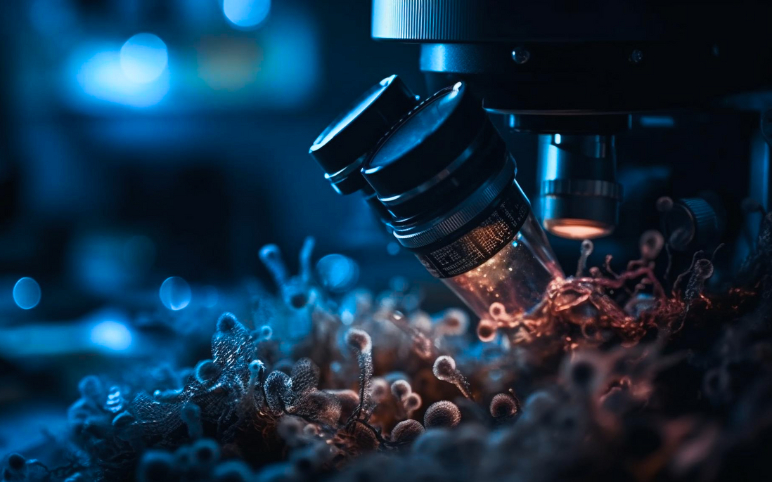Cloud-native technology powers Portrait Mobile, an Internet of Medical Things (IoMT) platform. It offers a complete wearable, continuous monitoring experience. In August of this year, Portrait Mobile received FDA approval.
Clinicians can take advantage of Masimo’s low-perfusion oxygen saturation measurement and measure-through motion capabilities by integrating Masimo SET. It makes non-invasive detection and ongoing patient status monitoring possible.
SET technology is used to monitor post-operative patients on opioids and to lessen blindness in neonatal intensive care unit patients. Additionally, it provided COVID-19 remote patient monitoring facilities. Additionally, Masimo’s ongoing patent dispute with Apple regarding smartwatches revolves around this technology.
“Portrait Mobile is built as an open platform, with the capability to be compatible with other technologies. The ability to integrate Masimo’s innovative SET pulse oximetry in a wearable sensor demonstrates the flexibility and scalability of our new platform while leveraging Masimo’s measurement expertise,” said Neal Sandy, GM of Monitoring Solutions at GE HealthCare. Neal added, “Clinicians and patients will see the real benefit as Portrait Mobile enhances clinical decision-making for mobile patients and ultimately, supports earlier detection of deterioration.”
As per DelveInsight’s “Patient Monitoring Devices Market” report, the global patient monitoring devices market was valued at USD 35.21 billion in 2022, growing at a CAGR of 8.20% during the forecast period from 2023 to 2028, to reach USD 56.46 billion by 2028. The escalating demand for patient monitoring devices is primarily attributed to the increase in the prevalence of various chronic and lifestyle-associated disorders. Moreover, the sudden outbreak of the COVID-19 pandemic has also contributed to the patient monitoring devices market. Additionally, the growing preferences for remote patient monitoring systems among patients and healthcare providers, the increase in technological advancement in the product arena, and the rise in the approval of various patient monitoring devices in the current year, among others are also some of the factors responsible for potentially increasing the global patient monitoring devices market during the forecast period (2023-2028).
Samsung Launched New Ultrasound System ‘V6’ with Comprehensive Imaging Capabilities
On November 13, 2023, the latest ultrasound system from Samsung, called the V6 was launched, designed specifically for women’s health and urology and offers comprehensive imaging capabilities in 2D, 3D, and color image quality. Boston Imaging, the company’s US headquarters for digital radiography and ultrasound business, announced that the U.S. Food and Drug Administration recently granted the V6 510(k) clearance for commercial use. Its cost-effective design satisfies workflow and productivity requirements.
The V6 not only improves image clarity and accuracy but also adapts to different medical settings thanks to its widescreen, compact, powerful design, and battery-operated design. These features increase accessibility and versatility for healthcare providers.
Samsung’s core imaging platform, Crystal Architecture, powers the V6 ultrasound system, providing improved image clarity and sophisticated automated tools like these:
With a 180° field of view for wide-angle imaging and a frequency range of 2-12 MHz to meet a range of imaging requirements, the miniER7 Endocavity Transducer is small enough to ensure patient comfort. Utilizing the probe with a 63% reduced head volume not only resulted in a significant 43% decrease in patient discomfort during prostate ultrasounds without compromising the quality of the images but it is also anticipated to potentially minimize pain during pelvic examinations in women going through menopause.
ViewAssist™ is an artificial intelligence (AI) tool that helps medical professionals document exams more easily and efficiently by automatically identifying imaging planes and labeling anatomy.
With BiometryAssist™, a semi-automated feature based on Deep Learning, doctors can concentrate more on patient care by having one-click fetal growth measurements that provide exam consistency while minimizing keystrokes.
UterineAssist™ is an artificial intelligence tool that measures the uterus’s size and shape automatically, aiding in the detection of abnormalities related to the uterus.
Mobile Export: A safe way to share images with friends and family that transfers fetal pictures straight from the ultrasound machine to the patient’s smartphone via a straightforward QR code.
SonoSync™: A real-time image-sharing solution that enables doctors and sonographers to communicate for training and care guidelines. Furthermore, real-time marking capabilities, text chat, and voice chat are offered for enhanced communication.
The V6 satisfies applicable FDA guidelines and medical device safety standards and has been assessed for acoustic output, biocompatibility, software functionality, cleaning and disinfection efficacy, and thermal, electrical, electromagnetic, and mechanical safety. It also includes a wide range of transducers suitable for various clinical applications. The V6 is a great fit in the reproductive endocrinology and infertility setting because it works with Cycle Clarity’s AI-based software platform.
“We are thrilled to introduce our latest innovation in Women’s Health and Urology imaging, reflecting our unwavering commitment to delivering efficient care and meeting the imaging demands of medical professionals,” said David Legg, Head of Boston Imaging. “The V6 provides advanced healthcare technology to clinicians, enabling them to provide a high standard of care.”
“The V6 was developed with the clinical needs of Women’s Health and Urology specifically in mind,” said Tracy Bury, Women’s Health Segment Leader for Boston Imaging. Tracy commented, “We’re proud to offer a new product that is not only accessible to a broad group of clinicians but also has innovative, automated features that can make patient care simpler and more efficient.”
According to DelveInsight’s “Gyneco-Obstetric Ultrasound Systems Market” report, the global gyneco-obstetric ultrasound systems market was valued at USD 2.83 billion in 2022, growing at a CAGR of 5.70% during the forecast period from 2023 to 2028, to reach USD 3.95 billion by 2028. The demand for gyneco-obstetric ultrasound systems is primarily being boosted by the growing demand for routine pregnancy sonographic scans for detecting complications, increasing prevalence of women’s gynecological-related diseases such as ovarian cysts; pelvic pain; genital infections; infertility, innovation in product development such as 3D and 4D systems, rising adoption due to no radiation exposure, are all contributing to the growth of the Gyneco-obstetric Ultrasound Systems market in the upcoming years.
MONARCH Platform for Bronchoscopy Received Regulatory License for China
On November 13, 2023, Johnson & Johnson MedTech announced that the MONARCH Platform and MONARCH Bronchoscope received regulatory approval in China.
The platform is the first J&J MedTech robotically assisted device authorized in China, as well as the first minimally invasive robotic device authorized for peripheral lung procedures. Additionally, this is the first time the MONARCH Platform has received regulatory approval outside of the US.
The MONARCH Platform is designed to facilitate diagnostic and therapeutic procedures by providing bronchoscopic visualization and access to adult patient airways when used in conjunction with the MONARCH Bronchoscope. The gadget makes it possible for medical professionals to perform peripheral lung procedures with robotic assistance and minimal invasiveness.
Since lung cancer nodules are often small, deep in the lungs, and difficult to reach, making early-stage diagnosis and treatment challenging, the ability to reach these hard-to-reach peripheral lung nodules earlier and more precisely is helping to change the future of interventional care for patients. Globally, lung cancer is the primary cause of cancer-related deaths. Research indicates that early detection can boost survival rates by identifying the disease at an earlier stage when treatment outcomes are more likely.
“There are more than two million patients diagnosed with lung cancer each year around the world, and nearly 40% of them are in China,” said Will Song, President, of Johnson & Johnson MedTech China. Will further added, “With this approval, MONARCH is poised to aid physicians in China as they work with patients to fight one of the most prevalent and deadly diseases in the country.”
“The MONARCH team is committed to driving meaningful innovation that changes the way patients experience healthcare,” said Adrian Whitford, President, of MONARCH. Adrian added, “Expanding the reach of flexible robotic-assisted devices for lung procedures to countries around the world is part of our vision to deliver breakthrough technology that improves clinical outcomes for patients fighting diseases like lung cancer.”
According to DelveInsight’s “Bronchoscopes Global Market” report, the global bronchoscopes market was valued at USD 19.14 billion in 2022, growing at a CAGR of 7.46% during the forecast period from 2023 to 2028 to reach USD 29.38 billion by 2028. The bronchoscopes market is witnessing positive market growth owing to factors such as the rising prevalence of various respiratory diseases such as tuberculosis, growing prevalence of lung cancers, increasing cases of chronic obstructive pulmonary diseases, and increasing product development activities concerning bronchoscopes among others.
Lunit Received FDA Nod for AI-Powered 3D Breast Tomosynthesis Solution, Lunit INSIGHT DBT
On November 14, 2023, Lunit, a leading provider of AI-powered solutions for cancer diagnostics and therapeutics, announced that it received the U.S. Food and Drug Administration (FDA) 510(k) clearance for its 3D Breast Tomosynthesis (DBT) AI solution, Lunit INSIGHT DBT.
With this approval, Lunit can now fully enter the US breast screening market, marking a significant advancement in the fight against breast cancer.
Singular Insight DBT is an artificial intelligence algorithm designed to evaluate 3D images produced by DBT apparatus. Using DBT imaging instead of standard 2D mammography screenings allows for a quicker and more precise diagnosis of breast cancer.
Due to DBT’s ability to perform more accurate breast cancer exams, there is a high demand for this technology worldwide, with over 64% of the demand coming from advanced medical institutions in the US. 88% of the 8,850 facilities in the US that have been accredited by the Mammography Quality Standards Act and Programme (MQSA) as of November 2023 are DBT-certified units.
This FDA approval builds on Lunit’s November 2021 accomplishments, when the FDA approved its AI-powered mammography analysis tool, “Lunit INSIGHT MMG,” and its chest X-ray triage solution, “Lunit INSIGHT CXR Triage.”
“The US is the biggest player in the global breast screening market, accounting for up to 40% of the market share. More than 40 million mammography screenings are reported in the US annually,” said Brandon Suh, CEO of Lunit. Brandon mentioned, “Given this substantial market influence, achieving FDA clearance for Lunit INSIGHT DBT not only solidifies our presence in the largest market but also marks a significant milestone in our mission to revolutionize breast cancer diagnosis and, ultimately, save more lives.”
According to DelveInsight’s “Breast Cancer Diagnostics Market” report, the global breast cancer diagnostics market was valued at USD 4.20 billion in 2022, growing at a CAGR of 6.67% during the forecast period from 2023 to 2028 to reach USD 6.16 billion by 2028. The breast cancer diagnostics market is witnessing positive growth owing to factors such as the increasing prevalence of breast cancer, increasing age and sedentary lifestyle, technological advancements, and government initiatives to increase the rate of screening and diagnosis, all factors contributing to the growth of Breast cancer diagnostics market during the forecast period from 2023-2028.
Route 92 Medical Announced Clinical Results for its Tenzing® Technology
On November 14, 2023, Route 92 Medical, the privately held medical technology company dedicated to improving outcomes for patients undergoing neurovascular intervention, announced compelling results from a multicenter clinical study1 on the Tenzing® 7 Delivery Catheter published in Stroke: Vascular and Interventional Neurology.
The study, which involved several institutions, sought to assess the Tenzing 7 Delivery Catheter’s effectiveness, safety, and efficiency in delivering therapeutic devices for mechanical thrombectomy in cases of acute ischemic stroke.
The key findings of the study include:
- A 95.9% success rate in deploying Tenzing 7 delivery catheter-powered large-bore reperfusion catheters to the clot face without the requirement for stent retrievers to be anchored.
- In 94.9% of cases, recanalization was successful.
- In 54.2% of cases, first-pass reperfusion using an aspiration catheter sized 07 was successful. This compares well with the best stent retriever data, even when balloon guides are used, which can be quite laborious.
- At hospital discharge, the median NIHSS improvement for the patients was a significant 10 points.
- Among the patients, 41.0% had a good functional outcome after 90 days.
“Early clinical and in vitro experiences have always shown the potential of the Tenzing 7 delivery catheter. These multicenter results support its position as a game-changer in the field of neurointervention,” said Dan Tonetti, MD, Director, of Acute Stroke and Neurointerventional Suite at Cooper University Health Care, and one of the lead contributors to the study.
“These findings underline our unwavering commitment to elevating patient outcomes through the development of best-in-class neurovascular intervention tools,” said Joey D. English, MD, PhD, Chief Medical Officer at Route 92 Medical. Joey added further, “The results illustrate the power of the Tenzing technology to elevate the clinician experience, improve patient outcomes, and set a new benchmark of thrombectomy for the industry as part of a complete stroke treatment solution, such as our recently launched FreeClimb 70 reperfusion system powered by Tenzing 7. Large-bore aspiration catheters reaching the target consistently, without crossing the embolus, have the potential to create fewer downstream effects. Tenzing is a major advance.”
According to DelveInsight’s “Neurovascular Devices Market” report, the global neurovascular devices market was valued at USD 2.84 billion in 2022, growing at a CAGR of 8.12% during the forecast period from 2023 to 2028, to reach USD 4.53 billion. The demand for neurovascular devices is gaining importance owing to the rising prevalence of the target patient population, increasing demand for minimally invasive neurosurgical procedures, ongoing development of technologically advanced products, and rising R&D investments, among others.
Vivasure Medical Announced 100th Patient Enrolled in the US Pivotal Study of its Vivasure PerQseal® Closure Device System
On November 14, 2023, Vivasure Medical®, a company pioneering novel fully absorbable technology for percutaneous vessel closure, announced that it had enrolled the 100th patient in its PATCH Clinical Study, which is a multi-center, single-arm, pivotal study evaluating the safety and efficacy of the Vivasure PerQseal® Closure Device System. The US Food and Drug Administration (FDA) granted investigational device exemption (IDE) approval earlier this year to advance the PATCH study.
Many life-saving percutaneous cardiovascular procedures, including transcatheter aortic valve replacement (TAVR), thoracic and abdominal endovascular aneurysm repair (TEVAR and EVAR), and the use of a cardiac assist device (CAD), require large hole arterial access from clinicians. Currently, suture- or collagen-based closure devices or surgical repair are the methods used for large-diameter artery closure. Major vascular complications, including vessel distortion at the closure site that may result in thrombus formation, stenosis, or abrupt closure, can arise from either of these conditions.
The first completely absorbable, suture-less synthetic implant for large-bore vascular punctures is called PerQseal. Its low-profile patch is designed to make deployment easier and more controlled than traditional closure techniques. It can be installed from inside the vessel. Thus far, clinical investigations have demonstrated a low rate of complications and high technical success.
Up to 188 patients from the US and Europe will be enrolled in and followed up on as part of the PATCH pivotal study. The company plans to use the findings of the clinical study to support both the international commercial launch of the PerQseal large-hole vessel closure system and an FDA pre-market approval submission.
“We’re grateful to the one hundred patients who have been enrolled in this study to date and the brilliant physician investigators working to gather data about our technology,” said Andrew Glass, Chief Executive Officer of Vivasure Medical. Andrew added, “This marks an important milestone for Vivasure as it brings us closer to our goal of demonstrating PerQseal’s potential in supporting successful percutaneous cardiovascular therapies.”
According to DelveInsight’s “Wound Closure Devices Market” report, the global wound closure devices market was valued at USD 11,507.02 million in 2022, growing at a CAGR of 5.65% during the forecast period from 2023 to 2028, to reach USD 15,988.30 million by 2028. The increase in demand for wound closure devices is primarily due to the increasing number of chronic and acute wounds caused due to traumatic injuries such as falls, accidents, and due to chronic disease-associated wounds. Moreover, rising surgical procedures worldwide, recent product approvals, and technological advancements in the wound closure devices product arena are also expected to boost the market for wound closure devices.



